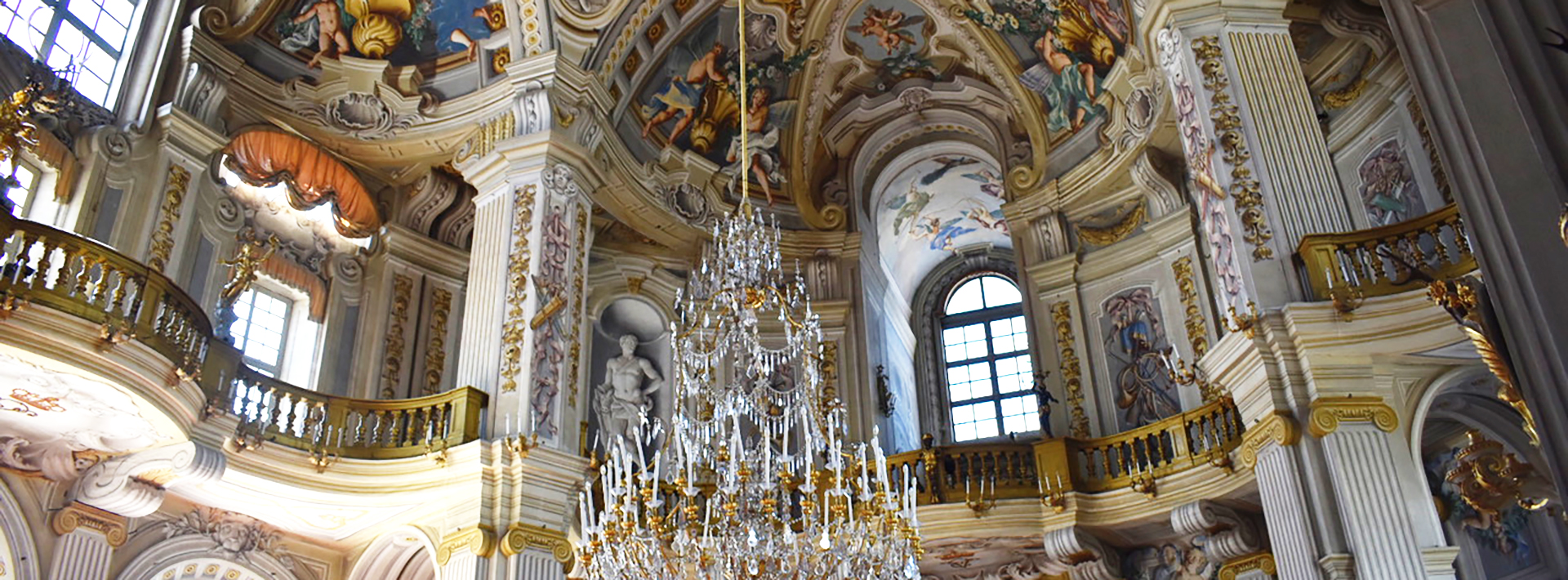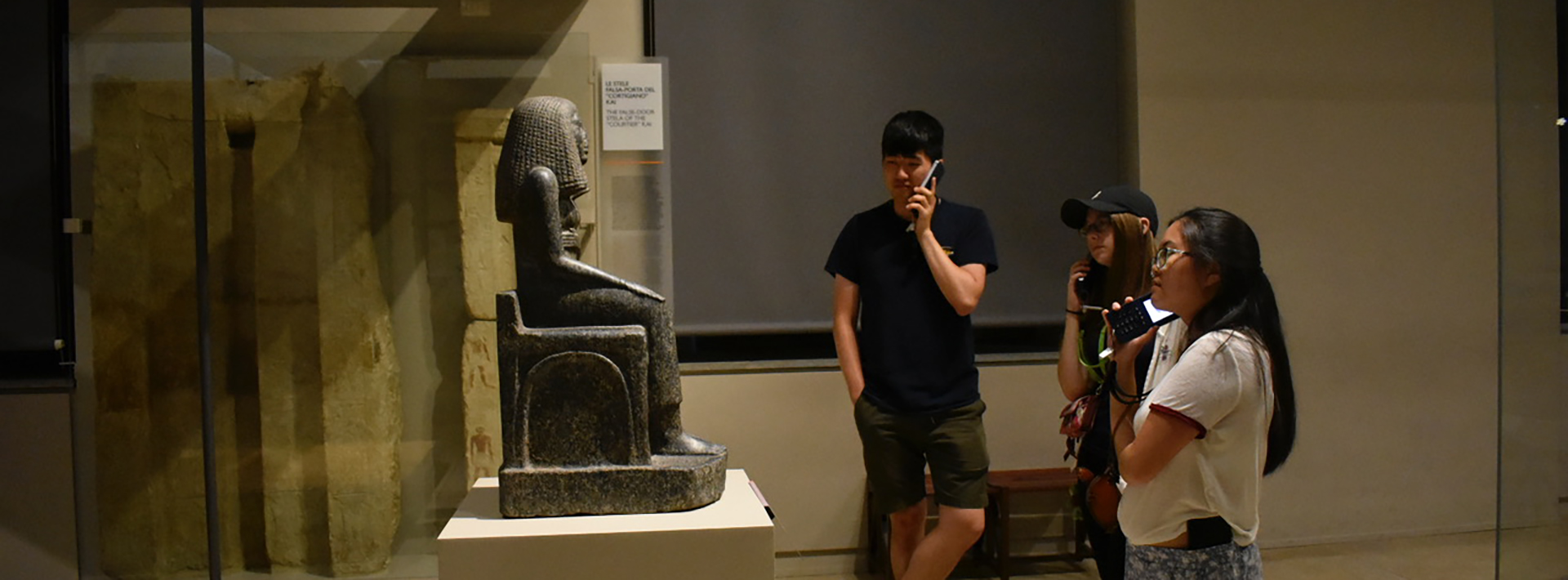ONE-MA3 2017: Grandeur in Turin

[fusion_text]By Sierra Rosenzweig
On our agenda for today, was to experience the grandeur of both a castle and a palace! Our first stop was the Castello di Valentino. After a series of lectures from researchers on Baroque architecture, we toured the castle and experienced the style of art and architecture native to Turin. Our group got to see the historic furniture, paintings, chandeliers, and sculptures that remained in the castle. We received a specialized tour that allowed us to climb the levels of the castle until we reached the roof, where we could study how the domes in the castle were suspended.

Our private tour of the Castello di Valentino
Our next stop was the Palazzina di Caccia di Stupinigi. In the Palazzina, we received another lecture about the conservation of the building and its surroundings. We learned how even the hunting area and paths were kept to look exactly as they were at the time of their creation. We viewed modern aerial maps of the area and compared them to historic paintings, noticing how the area had been almost perfectly conserved over time.

The ONE-MA3 group walking the path to the Palazzina di Caccia di Stupinigi
Our group then entered the Palazzina for our tour of the building. We viewed spectacular paintings and sculptures on our tour with one of the restorers, who pointed out the ways that the art was kept in its pristine condition. We also received a history lesson about the paintings of royal hunting traditions that covered the inside of the building. The group was in awe as we walked into the central room of the Palazzina where we saw the extravagant central chandelier and paintings on the ceiling. The conservation of the Palazzina was a remarkable feat that the whole group genuinely admired.

This summer, Professor Admir Masic is leading a program on Materials in Art, Archaeology and Architecture (ONE-MA3), in which MIT undergraduates are conducting three weeks of fieldwork in Privernum, Pompeii and Turin as a prerequisite for the Fall 2017 MIT course, 1.057 Heritage Science and Technology. The program involves real-world analysis of ancient infrastructures and materials and focus on teaching ways to improve sustainability of the future through the study of ancient successes. [/fusion_text]



